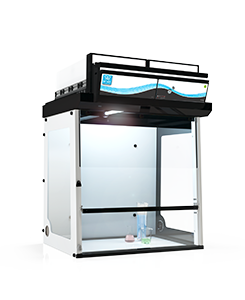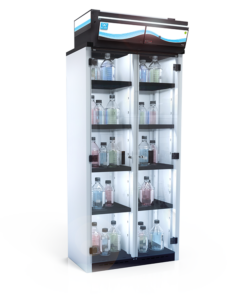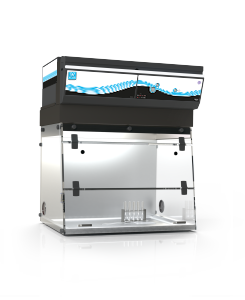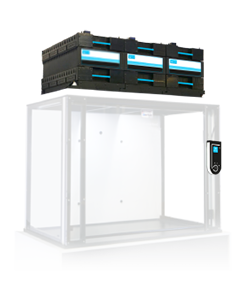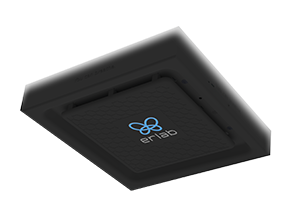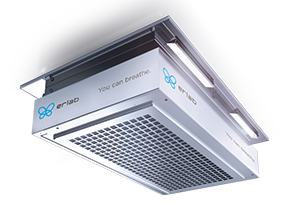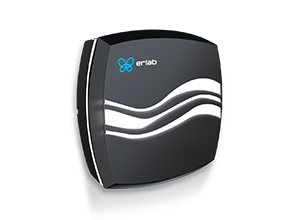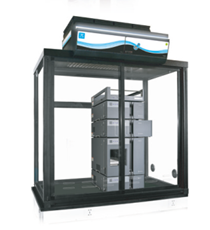Critical Experiments, Risks, and Protection Measures in the Pharmaceutical Industry
In pharmaceutical R&D, quality control, and synthetic chemistry, experiments often involve highly active, volatile, toxic, or flammable chemicals. To ensure personnel health, experimental accuracy, and environmental safety, establishing effective local containment and protection systems is essential.
Typical Laboratory Scenarios and Risk Analysis
- Weighing of Toxic or Potent APIs ~ Erlab Secure Weighing Station
During the weighing and transfer of potent powders, such as hormones, anti-cancer drugs, and antibiotics, particle dispersion may occur, thereby exposing laboratory personnel to significant inhalation risks. Additionally, many active pharmaceutical ingredients (APIs) are associated with hazards, including reproductive toxicity, sensitization, or carcinogenicity.
Environmental disturbances, such as airflow from lab HVAC systems, can compromise balance precision. This is especially critical when weighing microgram-level powders, potentially resulting in unstable readings and increased experimental error.

① Comprehensive protection for powder and liquid handling, ideal for high-potency drugs and toxic substances
② Compliant with NFX 15-211, featuring a BIBO (Bag-In/Bag-Out) system for safe filter replacement
③ Anti-vibration marble base ensures ultra-precise weighing (down to 10⁻⁶ g)
④ Ergonomic front-opening sash for easy operation
⑤ Integrated outlets and waste tray for efficiency
⑥ High-intensity lighting enhances safety and precision
⑦ Slide-rail filter housing enables contamination-free replacement
⑧ Visual alarms for early filtration failure warnings
- Sample Preparation & Pretreatment ~ Erlab Filtering fume hood
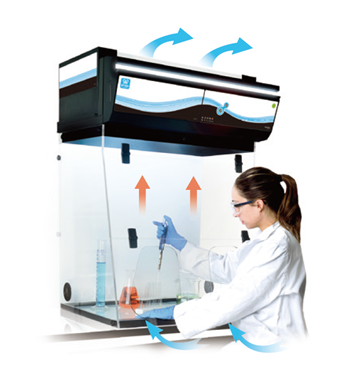
Sample pretreatment procedures, which may include acid/base digestion, dilution, heating, extraction, or grinding, frequently necessitate the use of corrosive or flammable substances such as hydrochloric acid, nitric acid, sodium hydroxide, acetonitrile, and methanol. If not appropriately handled, these processes can pose significant risks, including skin burns and inhalation of toxic vapors.
- Molecular Biology Experiments ~ Erlab Bio PCR Workstations
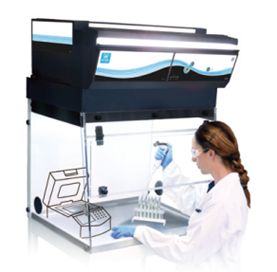
For nucleic acid extraction and PCR procedures, toxic substances such as phenol, chloroform, and ethidium bromide are frequently employed. These chemicals present significant chemical hazards and increase the risk of cross-contamination between samples.
- Synthesis and Reaction Experiments
Synthesis uses flammable and toxic solvents like THF, DMF, and aromatic amines. Many reagents have low flash points or explosive potential, requiring proper ventilation and fire safety controls.
- Precision Instrumental Analysis
In chromatographic analysis and solvent waste collection, residual solvent vapors may be continuously released, leading to chronic health risks if not properly ventilated or contained.



